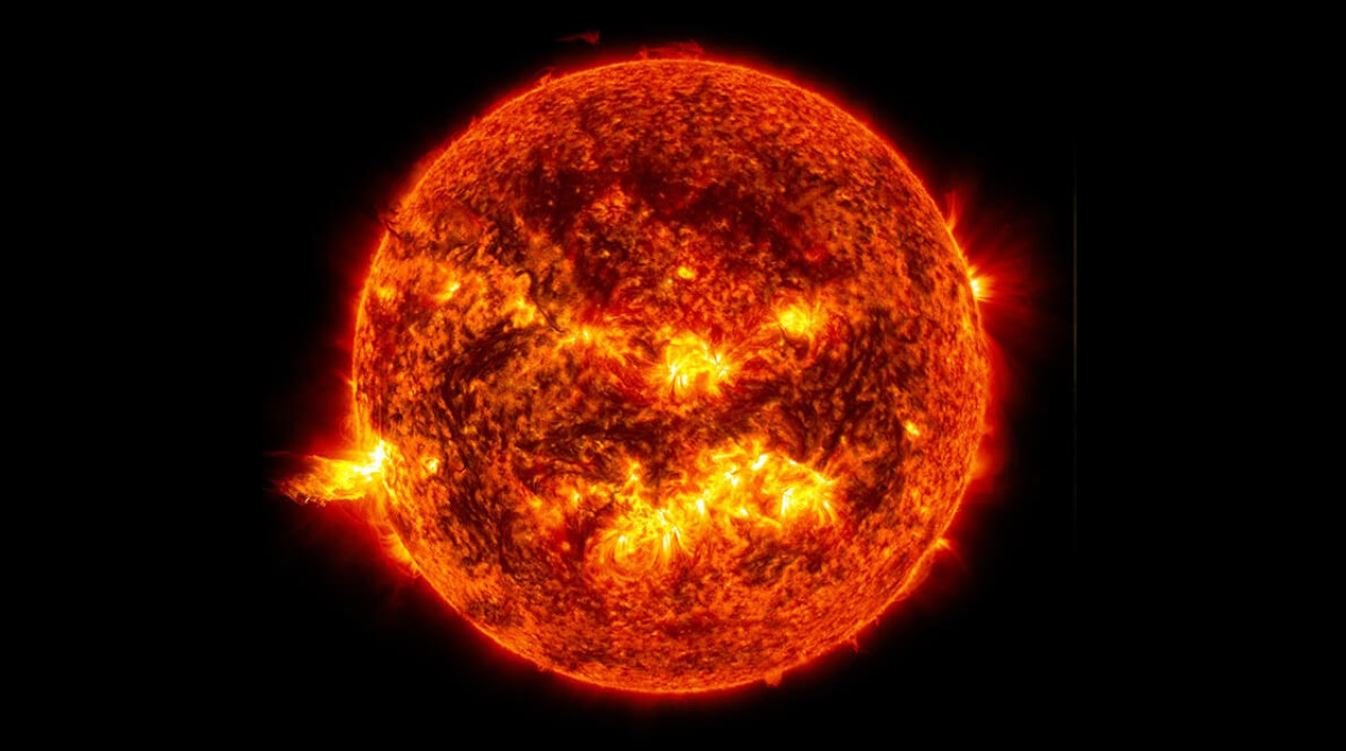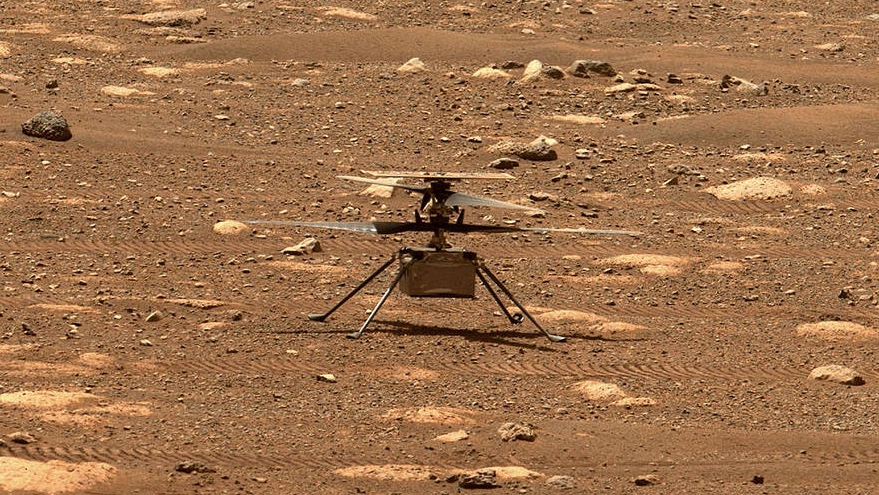
Record-breaking space discoveries of 2023
2023 will see a number of new astronomical records set, from exploding stars to distant black holes. We present them below.
The most powerful light from the sun
Among the new astronomical records set in 2023 was the most powerful gamma-ray burst ever emitted from the Sun, which was more powerful than any before. NASA's Fermi Gamma-ray Space Telescope has previously detected gamma rays from the Sun with energies up to 200 gigavolts. Now the HAWC observatory in Mexico has surpassed that, detecting solar gamma rays with an energy of about 1 teravolt.

The biggest explosion in the universe
According to new research presented in May, the strongest, longest and most powerful explosion ever detected, ten times brighter than any known supernova explosion, was found in a galaxy whose light has been traveling to Earth for 8 billion years. At its brightest, the explosion, cataloged AT2021lwx, shone with 2 trillion times the luminosity of the Sun.
The most distant fast radio burst
The most distant fast radio burst ever detected has been announced for 2023. The Oct. 19 issue of the journal Science describes how a fast radio burst that traveled through space for 8 billion years was observed on June 19, 2022. Fast radio bursts are a mysterious phenomenon. They are short bursts of radio waves that last only milliseconds, but in that short period can emit as much energy as our Sun in 30 years. No one knows what is the source of their occurrence. They often drift randomly in space, sometimes even repeating.
Ingenuity's record flights
NASA's Ingenuity is the only helicopter on Mars, so if it's setting records, it's breaking its own records. On September 16, Ingenuity made its 59th flight, the longest flight of its mission up to that point, hovering over one point for 142.59 seconds. It then completed a flight of the same length on October 19 on Flight 63, during which the helicopter flew 579 meters over land, the third-longest distance ever flown by a helicopter in a single flight (the record for the longest flight is 704 meters, set in 2022 on April 19). Since arriving on Mars with the Perseverance rover in February 2021, Ingenuity has completed 67 flybys as of Dec. 17. It was in the Martian air for a total of 121.1 minutes and traveled 15.3 kilometers, reaching a height of 24 meters.
The hottest summer on record
NASA's Goddard Institute for Space Studies (GISS) in New York has confirmed that the summer in the Northern Hemisphere in 2023 was the warmest since 1880, when humans began recording data on Earth's temperature. According to scientists, such a high temperature index was recorded as a result of human-induced global warming, combined with the influence of a natural phenomenon called El Nino. GISS scientists compare global temperatures with average summer temperatures between 1950 and 1980. They found that the months of June, July and August of 2023 combined were on average 0.23 degrees warmer than between 1950 and 1980. Only August was 1.2 degrees warmer.
Record low sea ice
A joint study by NASA and the National Snow and Ice Data Center (NSIDC) at the University of Colorado Boulder found that sea ice extent in Antarctic waters has reached a record low. Areas of the ocean where the proportion of ice cover is at least 15% are considered sea ice extent. Using satellite data to obtain data on sea ice in the polar regions of both hemispheres, scientists found that sea ice covered just 16.96 million square kilometers of the continent on September 10, the lowest ever. The previous low was set in 1986, when sea ice coverage was 1.03 million square kilometers (398,000 square miles) greater than the last record.
New record for time spent in space
NASA astronaut Frank Rubio inadvertently made history in 2023 by becoming the first American to spend a full year in space aboard the International Space Station. Rubio joined Russian cosmonauts Sergey Prokopev and Dmitry Petelin on Expedition 67. The trio was supposed to return to Earth in six months, but a coolant leak in their Soyuz capsule forced them to spend more than a year there. The trio finally returned to Earth, landing in Kazakhstan on September 27, 2023, after spending 371 days in space.
In doing so, Rubio surpassed the previous record held by NASA astronauts Mark Vande Hey in 2021–2022 (355 days in space), as well as the previous record held by Scott Kelly in 2015–2016 (340 days in space). However, Rubio still trails the world record holder, the late cosmonaut Valery Polyakov, who spent 437 days on the Russian space station Mir between 1994 and 1995.
The fastest stars
The fastest-moving stars ever recorded in our galaxy were revealed in July by examining stellar motion data collected by the European Space Agency's Gaia satellite. Accordingly, six new hypervelocity stars have been discovered, two of which, J0927-6335 and J1235-3752, are the fastest. they travel at 2285 km/s and 1694 km/s respectively. In order to understand what speed we are talking about, it means that, for example, J0927-6335 can rotate around the Earth 694 times in one hour.
The oldest supermassive black hole
The James Webb Space Telescope regularly sets new astronomical records, one of which was the discovery of the most distant supermassive black hole known in the universe in 2023. The black hole is located in a galaxy called CEERS 1019, which existed about 13.3 billion years ago (just 570 million years after the Big Bang). The mass of the black hole is about 9 million times the mass of the Sun, or about twice the mass of the supermassive black hole at the center of our galaxy, the Milky Way.
The smallest dwarf planet
Not every new astronomical record has to be about the biggest or the farthest. In 2023, James Webb discovered the smallest brown dwarf planet known so far, with a mass of only three to four times that of Jupiter. Astronomers using James Webb found the brown dwarf, along with other brown dwarfs less than eight times the mass of Jupiter, in the star cluster IC 348.
Tonga Volcano: the strongest lightning storm
A new study from the summer of 2023 found that the January 15, 2022, volcanic eruption on Hunga-Tonga-Hunga-Haapai island in the Tonga archipelago produced a record number of lightning strikes during a supercharged thunderstorm that lasted 11 hours over an area 240 kilometers wide. on. The volcano became active for the first time in December 2021, but it was the eruption accompanied by explosions that took place a month later that attracted the attention of the media. It produced the most powerful atmospheric explosion ever recorded, which is even more special because the source of the eruption is 150 meters underwater. As a result of the eruption, 5 billion kilograms of matter per second were ejected.
- Related News
- Wheel of Death: new method will help astronauts stay fit in low gravity
- Due to anomalies of Orion spacecraft, lunar exploration program may be delayed for years։ NASA
- TAO Observatory: World's highest telescope to study evolution of galaxies and exoplanets
- Powerful M9.5 solar flare causes radio blackout in Pacific Ocean
- What will happen to the Earth if the Moon disappears?
- Key to conquering the Red Planet: Why is NASA studying solar storms on Mars?
- Most read
month
week
day
- Digital Julfa Network is launching a pan-Armenian centre in the metaverse, on the Fastexverse virtual platform 905
- Sparkles: Boston Dynamics unveils a furry robot dog that can dance (video) 790
- Xiaomi unveils exclusive Redmi Note 13 Pro+ dedicated to Messi and Argentina national team 783
- Is there a ninth planet in the solar system? Scientists find new evidence 670
- Smartphone catches fire in child's hand in Russia 655
- What will happen to the Earth if the Moon disappears? 645
- How to understand how protected a smartphone is from water and dust? 634
- World's largest 3D printer was created in USL It prints 29 meter-long structures 620
- iPhone 16 may get colored matte glass back panel, 7 colors 610
- New iPad Pro to receive M4 chip and to be more powerful than Apple computers 606
- Archive

